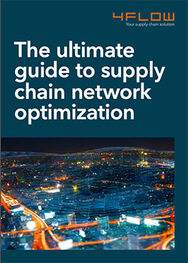International procurement and supply chain management consultancy INVERTO, part of Boston Consulting Group, says that there are four megatrends that will dominate the procurement landscape in 2024:
1. Cost reduction as inflation subsides
With inflation rates returning to normal across many parts of the world, Inverto says that businesses must take every opportunity they can to negotiate their supplier costs back down.

The last two years have seen suppliers gain the upper hand in negotiations, with shortages and increased input costs having driven up prices. That situation is now reversing. Supply chain shortages have eased and costs such as energy have fallen markedly, leaving far greater scope for businesses to ‘reset’ their costs.
Sushank Agarwal, Managing Director at INVERTO, comments: “Businesses should set their procurement teams ambitious targets for cost reduction in 2024. Pricing that may have been justified in 2022 is far less likely to be justified in 2024.”
“The fact that supply chain shortages are now much less widespread, and demand is decreasing means there is more competition among suppliers. That has created a far better environment for procurement teams to deliver value next year.”
2. Friendshoring amid trade disruption
Geopolitical disruptions to trade now occur on a regular basis – the blockade of the Red Sea is one example that now has the attention of boardrooms. There is potential for other trading relationships to become strained in 2024.
This disruption has led to change in supply chains. ‘Friendshoring’ is one example, where businesses look to source supplies from countries that are unlikely to see their trading relationships disrupted. Another is the growth of ‘local for local’ strategies, where businesses set up whole localised supply chains for key customers, with the aim of cutting out potential disruption from shipping components around the world. It has become more common, for example, for a US company to supply Chinese factories with inputs from Chinese suppliers.
Says Sushank Agarwal: “It makes sense for businesses to ‘control the controllable’ when it comes to their supply chains. If there is a risk that geopolitical tension could affect their production or sales, adapting supply chains to mitigate that can be hugely valuable.”
3. New applications for AI
2023 was undoubtedly the year that Generative AI landed for businesses. While there is no single ‘killer application’ for Gen AI in procurement, the use cases for it are already numerous.
The best-performing procurement teams in 2024 will have access to a wide range of AI tools for many specialised tasks: discovering new suppliers, generating data to support their negotiating positions, analysing spend by their suppliers. These tools will start to supplant some of the well-established procurement software in the coming year, leading to reduced costs.
4. Continued growth in regulation
Supply chains continue to come under stronger regulation. 2024 will continue this trend. December 2023 saw the passing of the European Union’s Critical Raw Materials Act, which aims to reduce dependence on other countries for the materials like cobalt, lithium and gallium that are vital in the net-zero transition.
This follows on from Germany’s Supply Chain Due Diligence Act that created new obligations for businesses regarding their supply chains.
Says Sushank Agarwal: “The days when businesses could have arm’s-length relationships with their suppliers are over. It’s now become very important for suppliers to be transparent and share data about their activities and their suppliers’ activities too. The are risks of loss of trade if they fail to do that.”
“In 2024 we will learn much more about how the EU is going to enforce its new regulations – businesses will be watching closely.”
- SEO Powered Content & PR Distribution. Get Amplified Today.
- PlatoData.Network Vertical Generative Ai. Empower Yourself. Access Here.
- PlatoAiStream. Web3 Intelligence. Knowledge Amplified. Access Here.
- PlatoESG. Carbon, CleanTech, Energy, Environment, Solar, Waste Management. Access Here.
- PlatoHealth. Biotech and Clinical Trials Intelligence. Access Here.
- Source: https://www.logisticsit.com/articles/2024/01/22/cost-reduction,-friendshoring,-ai-and-regulation-the-procurement-megatrends-for-2024
- :has
- :is
- :where
- $UP
- 2022
- 2023
- 2024
- a
- About
- access
- across
- Act
- activities
- affect
- AI
- aim
- aims
- already
- ambitious
- Amid
- among
- analysing
- and
- Another
- applications
- ARE
- around
- AS
- At
- attention
- back
- basis
- BE
- become
- been
- Better
- boston
- Boston Consulting Group
- businesses
- by
- CAN
- cases
- chain
- chains
- change
- chinese
- closely
- come
- comes
- coming
- comments
- Common
- company
- competition
- components
- consultancy
- consulting
- continue
- continued
- Cost
- cost reduction
- Costs
- could
- countries
- created
- critical
- Customers
- cutting
- data
- Days
- December
- decreasing
- deliver
- Demand
- dependence
- diligence
- Director
- discovering
- Disruption
- disruptions
- do
- dominate
- down
- driven
- due
- energy
- enforce
- Environment
- EU
- European
- Every
- example
- fact
- factories
- FAIL
- Fallen
- far
- follows
- For
- four
- from
- Gain
- Gen
- generating
- generative
- Generative AI
- geopolitical
- going
- greater
- Group
- Growth
- hand
- Have
- having
- How
- HTTPS
- Hugely
- if
- important
- in
- increased
- inflation
- Inflation Rates
- input
- inputs
- IT
- ITS
- jpg
- justified
- Key
- landscape
- Last
- leading
- LEARN
- leaving
- Led
- less
- like
- likely
- lithium
- Look
- loss
- MAKES
- management
- managing
- Managing Director
- many
- materials
- May..
- means
- Mitigate
- more
- much
- must
- negotiations
- net-zero
- New
- next
- no
- normal
- now
- numerous
- obligations
- occur
- of
- on
- ONE
- Opportunity
- or
- Other
- out
- over
- part
- parts
- Passing
- plato
- Plato Data Intelligence
- PlatoData
- positions
- potential
- Prices
- pricing
- procurement
- Production
- range
- Rates
- Raw
- Red
- reduce
- Reduced
- reduction
- regarding
- regular
- Regulation
- regulations
- Relationships
- returning
- Risk
- risks
- sales
- saw
- says
- scope
- SEA
- see
- seen
- sense
- set
- Share
- Shipping
- shortages
- should
- single
- situation
- Software
- some
- Source
- specialised
- spend
- start
- strategies
- stronger
- such
- supplier
- suppliers
- supplies
- supply
- supply chain
- supply chain management
- Supply chains
- support
- Take
- targets
- tasks
- teams
- that
- The
- the world
- their
- There.
- These
- they
- this
- to
- too
- tools
- trade
- Trading
- transition
- transparent
- Trend
- two
- under
- undoubtedly
- unlikely
- us
- use
- Valuable
- value
- very
- vital
- was
- watching
- we
- when
- which
- while
- whole
- wide
- Wide range
- widespread
- will
- with
- world
- year
- years
- zephyrnet












